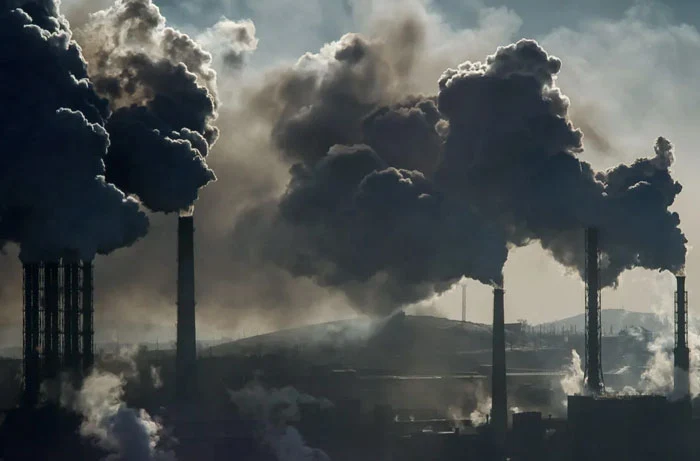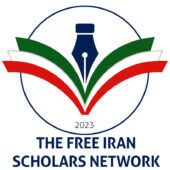By Hossain Jahansouz, Ph.D., Biochemist and a Leading Scientist and Industry Executive in the United States for Over Three Decades
Note: FISN research reports and papers may be used freely with proper referencing and credit to the authors and the Free Iran Scholars Network.

Abstract. Iran’s vast reserves of oil and natural gas once positioned it as a cornerstone of the global energy economy. Yet beneath government rhetoric about export growth and energy independence lies a sector plagued by decay, environmental destruction, corruption, and militarized control. Drawing on multiple sources, including the Carnegie Endowment for International Peace [1], Middle East Institute [2], Iran Focus [3], and the National Council of Resistance of Iran (NCRI) [4], this article examines how political gain and elite profit have undermined one of Iran’s most vital industries.
1. The Mirage of Energy Abundance
Iran holds the world’s fourth-largest oil reserves and the second-largest natural gas reserves. In theory, this should make Iran an energy superpower. But political authoritarianism, mismanagement, and sanctions have crippled the sector. The Carnegie Endowment [1] argues the crisis stems more from governance failure than from sanctions. The regime prioritizes control over efficiency. Infrastructure is outdated. Facilities are deteriorating. Gas shortages are widespread. The Middle East Institute adds that corruption and IRGC economic dominance have created a rentier economy with no capacity for long-term planning [2]. The Financial Times adds that Iran’s refining sector has faced a mounting crisis due to sanctions and deteriorating facilities [7].
2. Petrochemical Strategy: Diversion, Not Development
In response to sanctions, Iran doubled down on its petrochemical industry. The goal was to bypass oil export restrictions. But this came at a cost. Iran Focus [3] reports that IRGC shifted resources away from refinery maintenance and gas infrastructure. Petrochemicals may be harder to trace and potentially lucrative. But they require advanced technology and stable partnerships. Iran lacks both. The Middle East Institute notes that most petrochemical plants operate at just 60–70% capacity due to sanctions and technical failures [2].
3. IRGC’s Economic Domination
The IRGC dominates Iran’s economy, especially the energy sector. Through front companies like Khatam al-Anbiya, it controls terminals, refineries, and pipelines. NCRI has documented how these contracts are awarded without oversight [4]. The Carnegie Endowment highlights how monopolization blocks private investment and innovation [1]. It entrenches corruption and paralyzes development. Transparency International has reported that these networks drive systemic corruption and distort oil trade revenues [11].
4. Sanctions Evasion and Shadow Economies
To evade sanctions, Iran operates a massive shadow economy. IRGC-linked networks use ship-to-ship transfers, fake flags, and front companies in Malaysia, China, and Venezuela. Iran Focus reports that much of the oil is sold at a discount or bartered, bypassing the state and enriching IRGC insiders [3]. These shadow operations deepen inequality. They also increase environmental risks and cause industrial accidents. Reuters confirms the Revolutionary Guards’ growing control over oil exports through untraceable routes [6]. Al Jazeera further highlights how the expansion of this shadow economy sustains regime insiders and evades international accountability [12].
5. Collapsing Infrastructure
Iran’s energy infrastructure is falling apart. Refineries are decades old. The Abadan Refinery has suffered repeated fires and shutdowns. Corruption and sanctions make repairs difficult. The Carnegie Endowment notes Iranian refineries emit high levels of sulfur and particulates, worsening air pollution and public health [1]. The U.S. Treasury has sanctioned Iran’s petroleum and petrochemical networks, further cutting off access to critical parts and services [8].
6. Environmental Devastation
The energy sector is a top contributor to environmental damage. Cities like Ahvaz, Bandar Abbas, and Tehran are among the most polluted globally. The Middle East Institute [2] attributes this to flaring, refinery leaks, and sulfur emissions. NCRI reports oil spills and petrochemical waste are dumped into rivers, especially in Khuzestan [4]. A 2024 Nature study found soil in Ahvaz laced with toxic metals [5]. Human Rights Watch has also documented the impact of air and water pollution from oil zones on surrounding populations [10]. CSIS notes that Iran’s poor environmental governance has become a strategic vulnerability [13].
7. South Pars and Lost Opportunities
The South Pars gas field, shared with Qatar, shows what Iran has lost. Qatar invited foreign investment and became a top LNG exporter. Iran lost partners like Total after the U.S. left the JCPOA. Domestic firms filled the gap, but they lacked capacity. Now, gas extraction is inefficient. Equipment fails. The country faces winter shortages and can’t meet export promises to Iraq or Turkey [1]. MEES warns that gas shortfalls now jeopardize regional export agreements [14].
8. Energy Subsidies and Economic Inefficiencies
Fuel subsidies are a political tool. But they distort the economy. They encourage waste. They make reform difficult. Iran Focus reports 50 million liters of gasoline are smuggled daily, often with IRGC involvement [3]. The government fears cutting subsidies due to public backlash. This keeps deficits high and undermines renewable energy investment.
9. Labor Unrest and Public Health
Conditions in energy facilities have sparked labor strikes. Contract workers in Mahshahr, Assaluyeh, and Abadan protest unpaid wages and unsafe workplaces. These protests are met with repression, not reform [2][4]. Communities near industrial zones face asthma, cancer, and skin diseases. This deepens public anger. Iran International reports that labor unrest is intensifying across the oil and gas sector due to unsafe working conditions and delayed wages [15].
10. Regional Consequences and Declining Influence
Iran’s energy failures have hurt its regional clout. Iraq and Turkey are turning to Qatar, Russia, and the U.S. for energy [1]. Iran is now seen as an unreliable supplier. Its geopolitical leverage is fading. The Washington Institute notes that even traditional allies are frustrated with Iran’s inability to deliver reliable energy, eroding its strategic value [9].
11. The Illusion of Sovereignty
The regime talks about energy independence. But the reality is different. Petrochemical exports are opaque. The IRGC controls the supply chain. Ports, pipelines, and profits serve elites, not the public [4]. Without transparency, the claim of sovereignty is hollow.
12. Conclusion: Toward a Sustainable Future?
Iran’s energy sector reflects the broader regime crisis. Short-term survival trumps long-term planning. Reform requires breaking IRGC control. Iran must return to global markets, cut wasteful subsidies, and invest in sustainability. Without such changes, the collapse of Iran’s energy empire is inevitable.
References
[1] Carnegie Endowment for International Peace. Iran’s Energy Dilemma: Constraints and Repercussions (2025).
[2] Middle East Institute. Environmental Snapshots in Contemporary Iran (2024).
[3] Iran Focus. Reports on Sanctions Evasion, Petrochemical Corruption (2024).
[4] National Council of Resistance of Iran (NCRI). Energy Sector Mismanagement Reports (2024).
[5] Nature. Heavy Metal Contamination in Ahvaz Soil (2024).
[6] Reuters. Iran’s Revolutionary Guards Extend Control Over Oil Exports (2024).
[7] Financial Times. Iran’s Refining Sector Faces Crisis Amid Sanctions (2024).
[8] U.S. Treasury. Sanctions on Iran’s Petroleum and Petrochemical Network (2024).
[9] Washington Institute. Inside Iran’s Regime: Economic Frustrations of the IRGC (2023).
[10] Human Rights Watch. Environmental Health Crisis in Iran’s Oil Zones (2024).
[11] Transparency International. Corruption in Iran’s Oil Trade and IRGC Networks (2023).
[12] Al Jazeera. The Rise of Iran’s Shadow Economy (2024).
[13] CSIS. Environmental Mismanagement in Iran: A Strategic Challenge (2023).
[14] MEES. Iran’s Gas Shortfalls Jeopardize Regional Exports (2024).
[15] Iran International. Labor Strikes Escalate Across Iran’s Oil and Gas Sector (2024).
